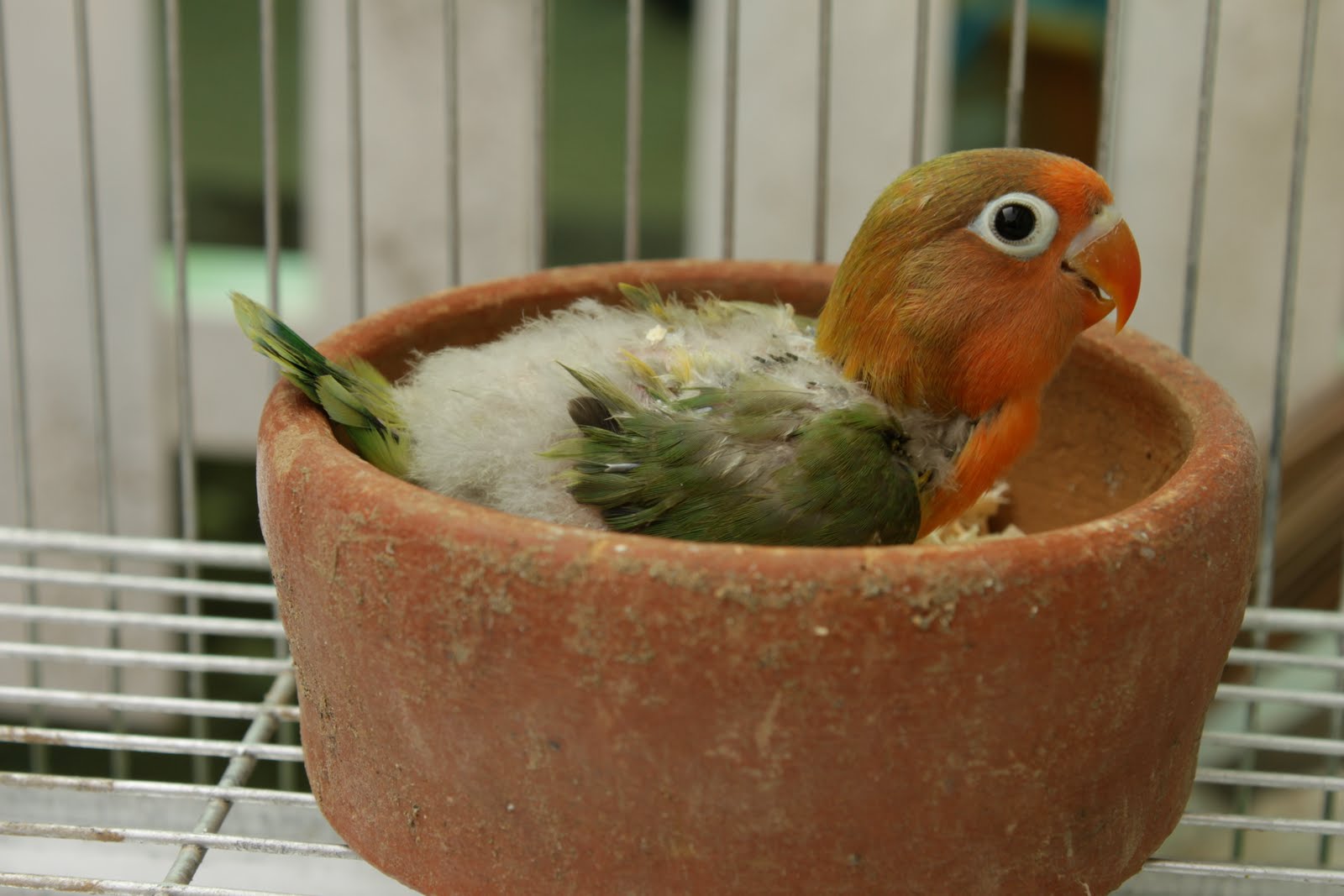 |
| Peach Faced Loved Birds |
Breeding Lovebirds
Lovebirds will breed willingly as single pairs and some species of lovebirds can be bred in a colony setting. Especially suited to a colony are the white eye-ring group of lovebirds.
Breeding Age for Lovebirds
Lovebirds need to be at least 10 months old, though 12 to 13 months is better. Also birds that are 5 to 6 years or older should be retired from breeding.
Sexing Lovebirds
Some visual characteristics that may aid in determining sex are that the female is heavier bodied than the male and will sit more broadly with legs apart, while the males sit more upright.
A females tail will appear more square while a males will appear more rounded. When observing the nesting behavior, the female will do most of the nest building work.
An anal inspection can be done but takes experience in sexing these birds to make a fair determination. Basically there are two bones called the ossa pubes on the ventral side of the pelvis and the female will be spread wider apart than the male.
Breeding Environment
If you are breeding lovebirds in a colony setting, it is very important to provide many more nest boxes than their are pairs of birds to minimize fighting. The nest boxes should all be the same and mounted at the same height of the enclosure. Also, be diligent in watching for fighting as it can lead to death.
A nest box for a lovebird is 8" x 8" x 8" (20 x 20 x 20 cm) or 10" x 6" x 6" (25 x 15 x 15 cm).
Egg Laying
 |
| Baby Olive Fischer Love BirdAdd caption |
The female will lay about 5 eggs, though the clutch could be as few as 3 eggs or as many as 8 eggs.
The incubation period is 22 - 25 days, with 75% to 80% of the eggs hatching. The hen will start to brood after the second egg is hatched. Often the male will join the hen in the nest. The chicks will begin to leave the nest in about 38 - 50 days and will be independent about 2 weeks after leaving the nest.
When attempting to calculate future hatch dates, always count forward from the day that you notice the hen begins to sit on the eggs. Sometimes the hen won't sit until all the eggs of a clutch have been laid, and they all need equal incubation time.
Hatchling Care and Weaning
Most breeders allow the hen to feed the babies from hatching to the age of two or three weeks. After that, the breeders take the babies out of the nest and place them in a brooder for hand-feeding. Most lovebirds need to be hand-fed until they are between six and eight weeks old when you can begin to wean them onto millet, soft pellets, and fresh fruits and vegetables.
 |
| Baby Pied Fischer Love BirdsAdd caption |


Post a Comment